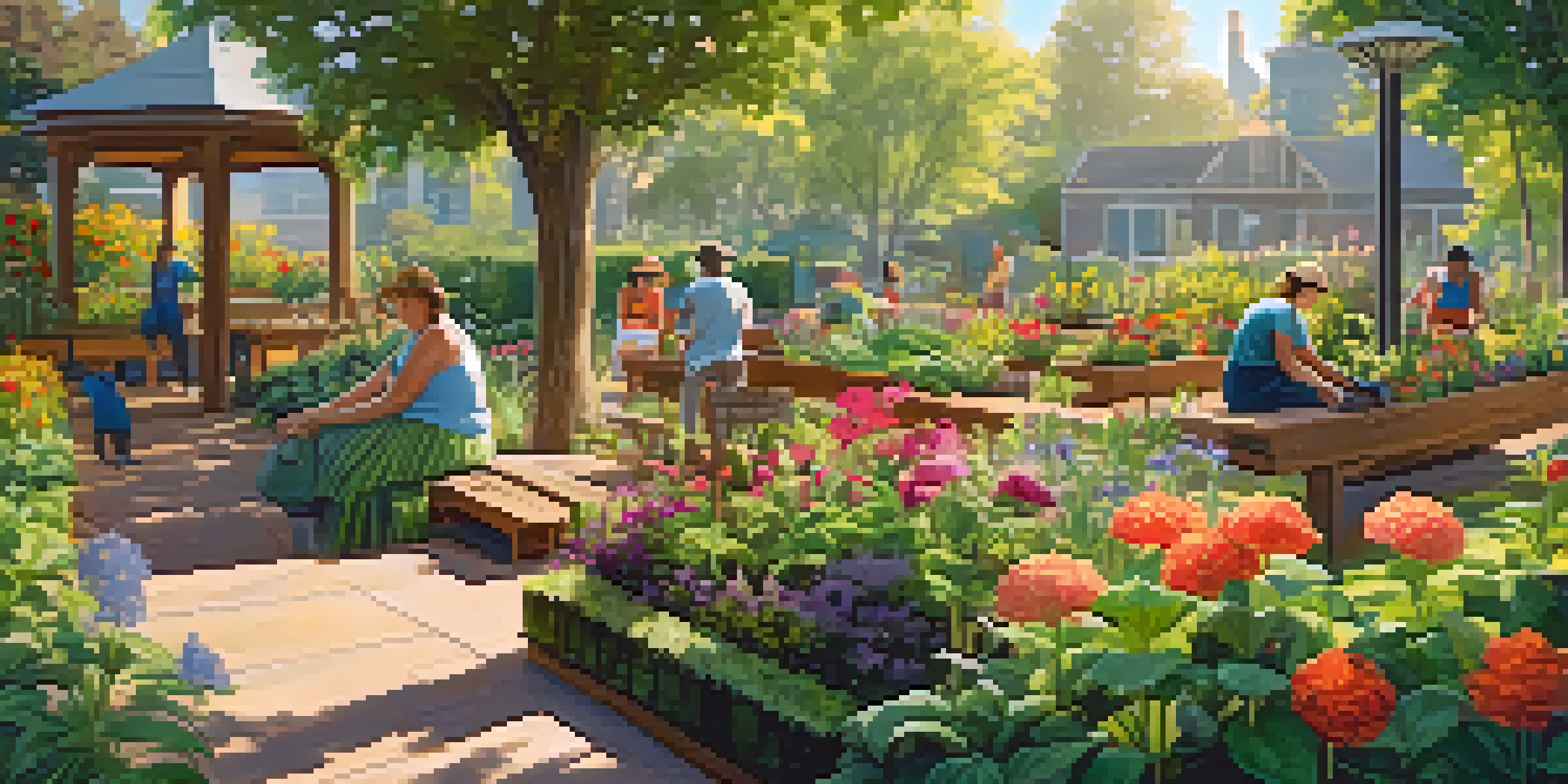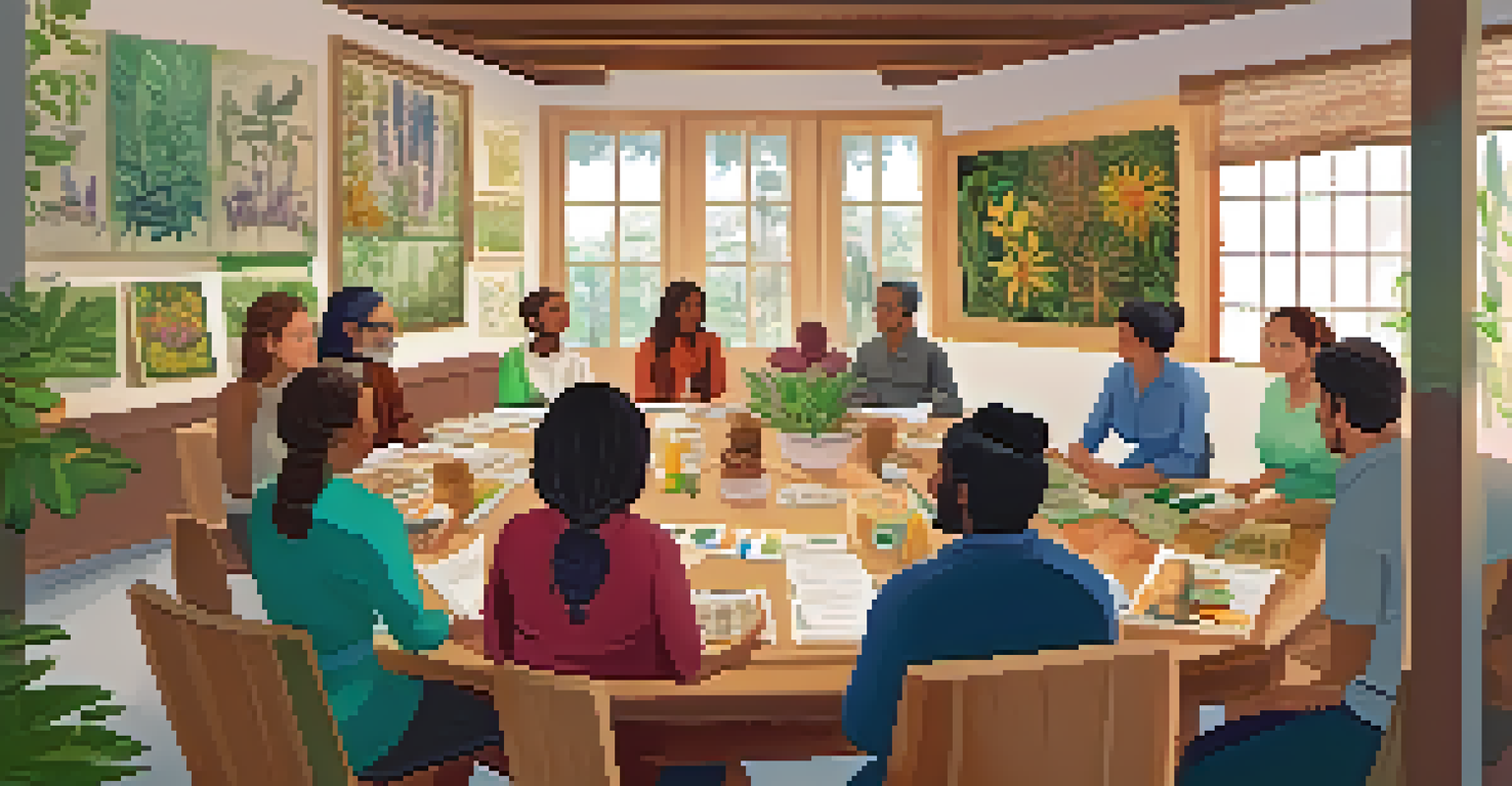Creating Healing Spaces: The Community's Role in Naturopathy

Understanding Naturopathy and Its Healing Principles
Naturopathy is a holistic approach to health that emphasizes the body's innate ability to heal itself. It incorporates various natural therapies, such as herbal medicine, nutrition, and lifestyle changes, to promote wellness. By focusing on prevention and treatment tailored to the individual, naturopathy supports the idea of treating the whole person instead of just symptoms.
The greatest medicine of all is to teach people how not to need it.
At its core, naturopathy aims to restore balance within the body, drawing on the healing properties of nature. This can involve everything from dietary adjustments to mind-body practices like yoga and meditation. The ultimate goal is to empower individuals to take charge of their health and well-being.
However, the practice of naturopathy extends beyond individual treatment; it thrives in a supportive community. When individuals come together in a healing space, they create an environment rich in shared experiences, knowledge, and emotional support, enhancing the benefits of naturopathic care.
The Importance of Community in Healing Practices
Community plays a pivotal role in healing, as it fosters connections that can enhance emotional and mental health. When people feel supported by those around them, they are more likely to engage in healthy behaviors and seek out wellness practices. This sense of belonging can significantly boost one's motivation to pursue naturopathic care.

Moreover, community involvement encourages the sharing of experiences and knowledge, which can be invaluable in a healing journey. For instance, support groups can provide insights into coping strategies and natural remedies that others have found beneficial. This exchange of information can lead to more personalized and effective approaches to health.
Naturopathy Emphasizes Holistic Healing
Naturopathy focuses on the body's natural ability to heal itself through individualized treatment and preventive care.
In healing spaces where community is prioritized, individuals often feel more empowered to advocate for their health. They can collaborate in activities such as community gardens, workshops, and wellness events, creating a collective commitment to holistic health and well-being.
Creating Healing Spaces Through Collaboration
Healing spaces are not just physical locations; they are created through collaboration and shared intentions. These spaces can be established in various environments, such as community centers, parks, or even online platforms. The key is to foster an atmosphere where people feel safe, respected, and encouraged to share their healing journeys.
In every community, there is work to be done. In every nation, there are wounds to heal. In every heart, there is the power to do it.
Collaboration among practitioners, community members, and local organizations is essential to building these spaces. By working together, they can offer diverse healing modalities, workshops, and resources that cater to different needs. This collective effort helps ensure that everyone has access to the support and knowledge they require.
Additionally, creating a healing space involves integrating natural elements that promote peace and tranquility. Incorporating plants, natural light, and calming colors can enhance the ambiance, making it a welcoming environment for those seeking healing and support.
Incorporating Nature into Healing Spaces
Nature plays an essential role in naturopathy, and incorporating it into healing spaces can significantly enhance the overall experience. Spending time outdoors has been shown to reduce stress, improve mood, and boost the immune system. Creating healing spaces in natural settings, such as gardens or parks, allows individuals to connect with the earth and its healing properties.
Community gardens are an excellent example of how nature can be integrated into healing spaces. They not only provide fresh produce but also create opportunities for social interaction and learning. Engaging in gardening can be a therapeutic activity, allowing individuals to witness the growth process and nurture something outside themselves.
Community Enhances Healing Journeys
A supportive community fosters connections that encourage shared experiences, knowledge, and motivation in pursuing wellness.
Furthermore, bringing elements of nature indoors, such as potted plants or natural materials, can help create a serene environment. This connection to nature is a fundamental aspect of naturopathy, emphasizing the importance of a holistic approach to health.
The Role of Education in Empowering Communities
Education is crucial for empowering communities to take charge of their health. By providing resources and information about naturopathy and natural healing practices, community members can make informed decisions regarding their well-being. Workshops, seminars, and online courses can serve as platforms for expanding knowledge and skills.
In addition to formal education, peer-to-peer learning can also be incredibly effective. When individuals share their personal experiences and insights, it fosters a deeper understanding of naturopathic principles. This collaborative learning environment encourages community members to explore various healing modalities and find what resonates with them.
Moreover, educating the community about the benefits of naturopathy can inspire a shift in mindset towards holistic health. As individuals become more aware of the interconnectedness of body, mind, and spirit, they are more likely to seek out natural remedies and support one another in their healing journeys.
Fostering Inclusivity in Healing Spaces
Inclusivity is a vital aspect of creating effective healing spaces. It ensures that everyone, regardless of background or circumstance, feels welcomed and valued. By embracing diversity, communities can enrich their healing practices and provide a broader range of perspectives and experiences.
To foster inclusivity, it's essential to consider the unique needs of various groups, including marginalized communities. This might involve offering culturally relevant healing practices or providing resources in multiple languages. Ensuring accessibility for individuals with disabilities is also crucial in creating an environment that invites participation from all.
Nature Enriches Healing Environments
Incorporating natural elements into healing spaces can significantly enhance well-being and promote a holistic approach to health.
Ultimately, inclusive healing spaces cultivate a sense of belonging and acceptance. When individuals feel seen and heard, they are more likely to engage fully in their healing journeys and support others in the community.
The Future of Healing Spaces in Naturopathy
Looking ahead, the future of healing spaces in naturopathy is bright, as more communities recognize the importance of holistic health. With an increasing focus on mental and emotional well-being, the demand for supportive, collaborative environments will likely grow. This shift presents an opportunity for practitioners and community members to innovate and create new healing modalities.
Technology also plays a role in shaping the future of healing spaces. Virtual platforms can connect individuals across distances, making it easier to share knowledge and experiences. Online workshops and support groups can complement in-person gatherings, ensuring that everyone has access to the resources they need.

As communities continue to prioritize health and wellness, the integration of naturopathy into everyday life will become more commonplace. By working together, individuals can create vibrant healing spaces that promote well-being and empower each other to thrive.